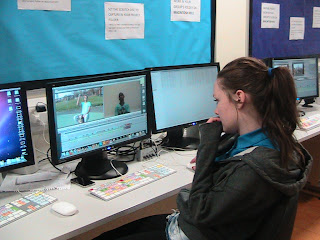In the preliminary task we learned how to, achieve the 180 degree rule, and how to stay on one side of the line with out crossing it and it looking all weird and mismatching, it was rather challenging especially when one person is taller than the other because it was hard to capture the right shots, when Anoop and mark have an argument. We had to learn how to edit correctly and get used to all the buttons on the final cut pro keyboard, in the preliminary we got help of the teachers on how to do it but for the final piece we had to do it on our own.
it was rather challenging because we had to do everything including coming up with the story, where as in preliminary we was told what to do and so. so now looking back at what we started, it is very impressive the work we have produced. even though at the start we had a lots of argument on how to shoot or deciding who's going to do what n silly arguments like that. we had to change our films at least about 3 or 4 times before we even had a clear mind of what the film was going to be about... our plan started of from a scary/thriller which we thought was going to be rather easy but when it actually came to shooting the movie we planed it was very difficult and hard and we didn't have the rights places to shoots or get the access for it. by then we was running out of time as well so we decided on doing like comedy/documentary style film, it was an inspiration from the series 'come fly with me' and the character Taaj.
in the end after all the struggle and effort we went through, we did manage to pull it through and produce a rather good opening of the film how we wanted it as well. but we still could've made it a lot better but due to the time limit we had it was very hard to do


